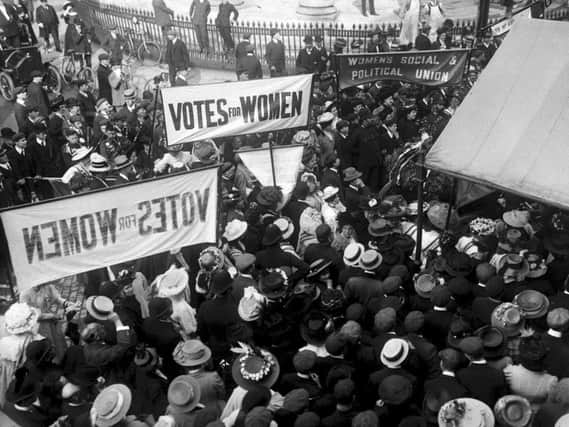Day a Preston heroine was arrested


‘The magistrate pointed out to them that the laws must be observed, and he was determined to put an end to the disorderly and disgusting proceedings.’That is how the judge summarised their offences when sentencing Edith Rigby, who lived in Winckley Square, Preston, and her fellow suffragettes according to the February 14, 1907 edition of the Lancashire Daily Post.The previous afternoon the women of the Women’s Social and Political Union were celebrating the first anniversary of the group at Caxton Hall, London. During this celebration Emmeline Pankhurst, Rigby and her fellow suffragettes decided they would march to the Houses of Parliament.The women were protesting the absence of any mention of women’s suffrage in the recent King’s speech and the right of women to vote. In lines of twos and threes the women began their walk from Caxton Hall to Parliament. As they marched the women were accompanied by police, until they reached Westminster Abbey.At this point in the march the police were instructed to break it up. “The women struggled for a long time something in the nature of a football scrummage being carried on with them and the officers,” reported the Lancashire Daily Post. After the struggle, a small body made its way across the grounds of Westminster Abbey while the main body made its way towards the Houses of Parliament. The larger group subsequently charging the door of the House of Commons. Amid the struggle the voices of shouting women could be heard, “We will not go away, we will see the Prime Minister,” shouted one woman.“We have as much right to be in the House as any of them,” shouted another. The attempts to gain access to the House continued for some time until officers gave instructions for the most ‘troublesome’ women to be arrested and taken off to Scotland Yard.Shortly after, other groups of the suffragettes clashed with police and a dozen more women were arrested. The police, according to one correspondent, “did not adopt kid-glove methods, nor did they try a policy of peaceful persuasion.” By this point, between 25 and 30 arrests had been made. When the large iron gates of Parliament were closed, the suffragettes turned their attentions to the police and an even bigger struggle followed. A second march or ‘attack’ - as the newspaper of the day branded it - came soon after, with the women singing to the tune of “John Brown’s Body” as they linked arms and marched for the House again. When the women reached Parliament Square they were greeted by 500 police, and even more in reserve. Arrests soon followed and within 30 minutes the police had successfully dispersed the crowd thanks to the numbers on their side. In this second clash with police, 23 women and two men were arrested. Among those apprehended were Edith Rigby and Emmeline Pankhurst and her two daughters Sylvia and Christabel Pankhurst.This day is heralded as one of the most significant in the whole suffragette movement, many arguing that it was on this day when parliament began to take the issue of women’s suffrage seriously. In 2017, these women are regarded as heroes, role models; women that stood up for a just cause against all the odds, however, in 1907 this was far from the case.“Certainly the performance last night was discreditable and futile,” read the Lancashire Daily Post two days after the march. This was the day Edith Rigby and her fellow suffragettes were tried and sentenced for their role in the disturbances outside Parliament. Rigby showed her ever-present defiant nature when she spoke in court: “In 1906 and 1907 women tried to enter the Houses of Parliament to obtain their rights. These are not the first years.“In 1641 the women went to the Houses of Commons.”Rigby continued in a determined manner: “We believe that the needs of the nation should not be silenced in the making of the laws of the nation.”The idea that the suffragettes were acting in vain was a common theme in the newspapers which followed the events of February 13, 1907. “The case for women’s suffrage is an exceedingly strong one, but its justice and necessity have not yet appealed to a majority even of the women in this country,” read the February 14 edition of the Lancashire Daily Post. That Parliament was not elected to advance the cause for women’s suffrage was also a common theme in the newspapers which followed.“This Parliament was elected for many purposes: it was assuredly not returned to power to confer the suffrage upon women,” read the same edition of the Post. The good nature of the march was also questioned: “We may once more put the question whether the cause sought to be advanced is influenced for good by these disgraceful proceedings.”The newspaper also claimed that the fight for women’s suffrage was only being fought predominantly by one political group.“It is true that the intention for votes for women is being made for the most part by women who are active Liberals,” it was claimed by the February 18 edition of the Post.